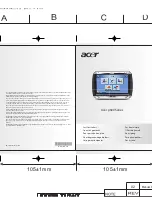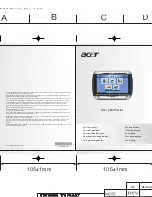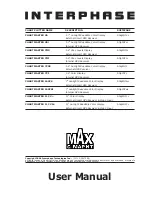
5. XCSoar
XCSoar is free open source software optimized for Android systems with a touch screen and comes pre-installed
on the XCTouchNav. To launch the preinstalled XCSoar wipe screen once to the right in order to see installed
apps, then tap on the icon for XCSoar to start the application.
For a complete glider flight computer, however, further values such as GPS fixes, the dynamic pressure, TE
nozzle pressure, static pressure are needed in order to be able to get an indication for an optimal speed to fly,
precise final glide or moving map. The XCVario with a FLARM connected delivers exactly this data that can be
provided by a RS232 serial cable connection (recommended way) or wireless via WiFi or Bluetooth.
If you don’t own a FLARM, there is a cheap GPS module provided in the shop, that can be used instead of
FLARM.
Meanwhile smartphones or tables are available on the market and may be suitable in terms of display brightness,
contrast and feature a touchscreen, those devices may have issues at higher temperatures and will shut down in the
cockpit already before flight when canopy is closed and temperatures rises above 40° C. The XCTouchNav
operates directly on the 12V on board grid, no DC converter is needed, is tested until 70° C and won’t face you
with the danger to shut down from a lipo battery overheat.
With the XCTouchNav, advanced technology is available at an affordable price.
XCTouchNav running XCSoar, offers a perfect glider computer with the latest technology, quad core CPU,
intuitive touchscreen operation, many screens full of features, flight planning, final approach and freely
configurable info boxes, beside display of terrain with airspace including side view. Of course topography and
landing fields are easy to be setup. There is a thermal assistant for centering thermals, audio variometer with with
external speakers, speed to fly command according to your MC setting or assistance for dolphin cross country
speed and more.
6. Bluetooth
In order to establish a connection via Bluetooth, the XCTouchNav needs to pair with the device.
To do this, perform a device scan in the Android device setup under Bluetooth, and pair your
device e.g. an XCVario variometer, which should appear there in the device list as e.g. XCVario-
5678, in the pairing dialog.
If a Bluetooth password is requested for an older device, try to enter "1234", newer Bluetooth
standards won’t require this.
Then in XCSoar under Configuration/NMEA connection, setup a new device A..F. Any paired device can be
found in the 'Connection' field with its Bluetooth ID. Select this there and in the following dialog enter the desired
driver, for current XCVario versions "XCVario". The switch K6Bt remains in the 'off' position. After you have
acknowledged the dialog with “OK”, XCSoar will connect to the device within a few seconds, which will then
appear as a regular NMEA connection, e.g. with the status “connected: Baro,Vario,Environment[,FLARM]”.
The relevant records of the device should now be visible under 'Monitor'. For details regarding the data there
please refer to the manufacturers handbook for the corresponding device. You can paired several different
Bluetooth devices via Bluetooth protocol.
Page 7








































